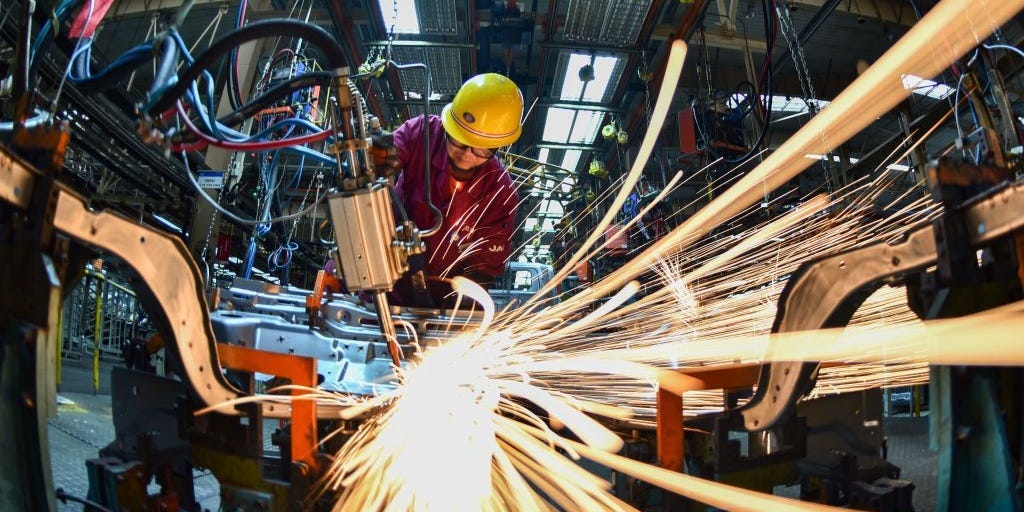
- China's manufacturing activity shrank in September, as the power crisis hit factories, official data showed Thursday.
- The official manufacturing PMI fell to 49.6 from 50.1, dropping into contraction for the first time since the start of the pandemic.
- Goldman Sachs estimates nearly half of China's industrial activity has been affected by power cutbacks.
- Sign up here for our daily newsletter, 10 Things Before the Opening Bell.
China's manufacturing activity unexpectedly declined in September due to controls on electricity consumption and inflationary pressures contributing to higher input prices, data from the country's official statistics agency showed on Thursday.
The official manufacturing Purchasing Managers' Index in September came in at 49.6, slipping from 50.1 in August. That missed the median forecast of analysts polled by Bloomberg, who predicted a decline to 50. This indicates that the manufacturing sector fell into contraction for the first time since February 2020.
During economic downturns, readings as low as 45 are ordinarily expected, while during expansion, PMIs tend to linger in the mid-50s range.
Zhao Qinghe, a senior statistician at the statistics bureau, attributed the decline to factors "such as the low prosperity level of high energy-consuming industries."
China initially bounced back quickly from the impact of lockdowns imposed to curb the pandemic last year, making it the only major economy to recover in 2020. But it has since lost momentum due to headwinds that include rising costs of raw materials that have hit production, and regulatory pressure to meet environmental targets for energy consumption.
Goldman Sachs recently cut its 2021 GDP growth forecast for China to 7.8% from 8.2%, saying climate-focused energy constraints are to blame. The investment firm estimates 44% of industrial activity in the world's second-largest economy has been affected by the cutbacks.
A separate private survey, the Caixin PMI, which focuses on small, private, and export-oriented firms, showed manufacturing activity held steady in September. The index rose from 49.2 in August to 50, above Bloomberg estimates for a reading of 49.5.
Meanwhile, the official services PMI index and composite PMI output index were stronger in comparison, coming in at 53.2 and 51.7, respectively. That was higher than last month by 5.7 and 2.8 percentage points respectively, indicating a return to expansion. Still, the forward-looking new orders component came in below 50 for a fourth consecutive month, reflecting a drop in demand.
The PMI data is "reflective of the impact of the recent energy crunch on production," said Robert Carnell, ING's regional head of research for Asia Pacific. He predicted there could be some easing of the energy supply constraints in the months ahead, but mainly to keep supplies flowing to the household sector.
"So the crunch on the industry may remain in place for some time," he said.
With China on holiday for a week from Friday, the manufacturing PMI is unlikely to rebound much in October, according to Jeffrey Halley, a senior market analyst at OANDA.
The Shanghai Composite closed 0.9% higher on Thursday.